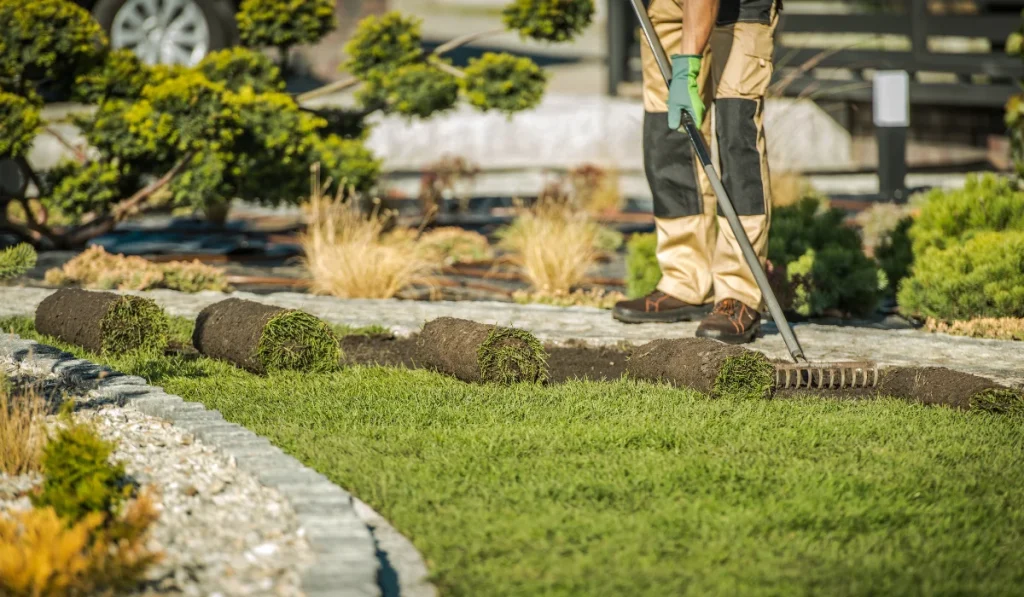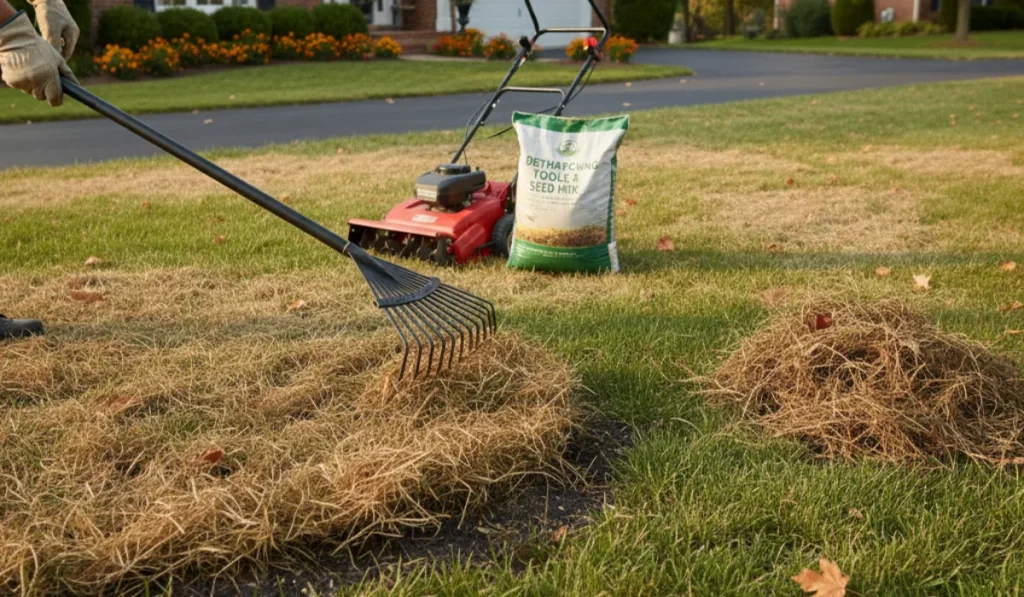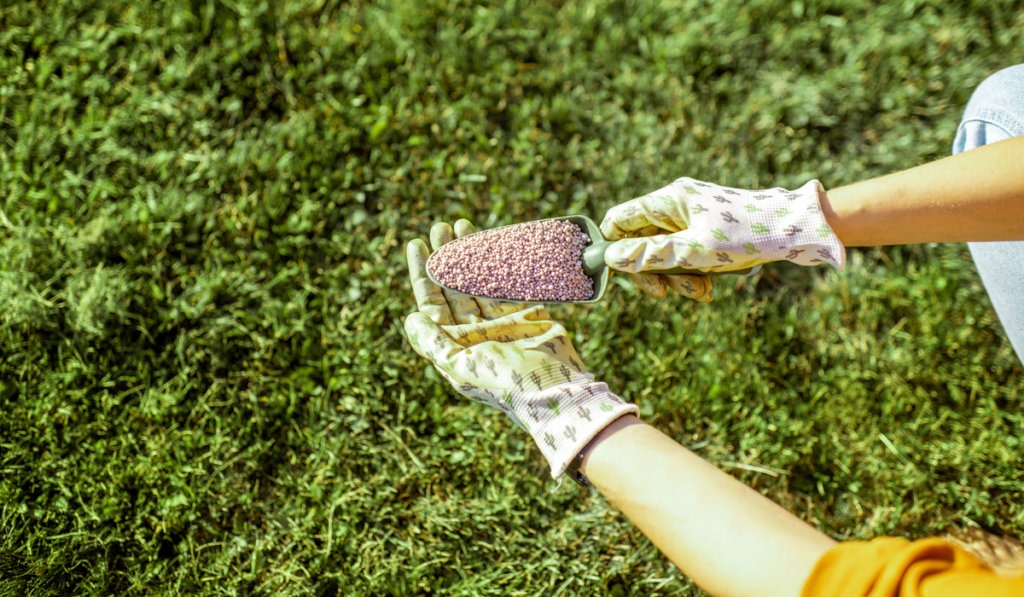When you lay sod to start your new lawn, watering is your top priority when you lay new sod, and for good reason. That fresh roll of turfgrass needs moisture to establish its root system, stay green, and begin growing into the soil beneath it.
But watering isn’t just about the amount of water. Giving it too much water can lead to setbacks that delay or even ruin your sod installation.
This article breaks down what happens when you overwater new sod, why some people do it anyway, and what to do instead.
Key Takeaways
- Overwatering new sod is possible and often happens when you try to protect it from heat or dry soil.
- Some extra water helps at first, but too much water can lead to soggy lawns, rot, and shallow roots.
- A smart watering schedule avoids puddles and keeps your lawn healthy by adjusting how often and how deeply you water.
- Getting expert guidance on watering helps your sod grow strong from the start.
Is It Possible to Overwater New Sod?
Yes, it is possible to overwater new sod. But depending on your situation, it might feel like the right thing to do. If you’re trying to give your new sod lawn the best start, especially with California’s tough conditions, it’s easy to think more water is better.
Here’s why you might lean that way:
It Prevents the Sod From Drying Out in Extreme California Heat
For many California homeowners, especially in the Central Valley or SoCal, there’s a constant worry about your sod drying out.
Once you lay sod, its roots aren’t deep yet, and hot air combined with wind can pull moisture out of the soil quickly.
Frequent watering sessions may feel like the only way to ensure the sod doesn’t lose too much water to evaporation before it can develop healthy roots.
It Feels Necessary With Fast-Draining Soil Types
Some areas in California have sandy or decomposed granite soils that absorb and drain water quickly. When your soil type doesn’t hold onto moisture, it can seem like your new sod care routine requires more frequent watering.
In this case, it’s easy to cross the line into overwatering when you’re just trying to deliver enough water to keep the sod roots moist.
It Helps Rehydrate Sod That Sat Too Long Before Installation
If you’re getting sod delivered from a sod farm and don’t lay it right away, you could be starting with a dry product. Some homeowners will compensate by using a sprinkler system more aggressively after the sod is laid.
While this may help the grass blades perk up initially, too much water after the first two weeks can lead to soggy conditions and delayed root growth.
It Helps Settle Sod Into the Topsoil
A deep watering session immediately after you lay sod helps the sod settle firmly into the topsoil and remove air pockets. This helps connect the sod roots with the soil and can encourage better early root establishment.
But this is something you should only do right after installation, not a practice to continue every day.
What Happens When You Overwater New Sod
If you’re watering too often or too much, even with the best intentions, your new lawn can start showing signs of trouble fast.
These are some of the most common issues you’ll want to watch for:
Your Lawn Develops Root Rot Instead of Strong Roots
Too much water cuts off oxygen in the soil, which is vital for a healthy root system. Without enough air, bacteria and fungi can flourish, causing root rot.
This issue is especially common when sod stays soggy overnight or when your irrigation system runs too long. It’s one of the top reasons new lawns fail to take hold.
You Get Shallow Roots That Can’t Handle Drought
When you water frequently but lightly, your sod roots don’t have to work to find moisture. They stay near the surface. To promote healthier root growth, your watering should reach at least 3 inches below the soil surface.
This creates shallow roots that are more vulnerable to underwatering and less effective at supporting a healthy, green lawn long term.
Deep watering with less frequency encourages deep, strong roots that can reach down for moisture when things dry out.
You Risk Fungal Lawn Diseases
Sod that stays wet too long, especially in shaded areas or humid coastal climates, becomes a breeding ground for lawn disease. Conditions like pythium and brown patch thrive in overwatered sod lawns.
This is especially risky for warm-season grasses like St. Augustine that already have dense growth, which limits air circulation.
You Waste Water and Violate Local Landscaping Regulations
Overwatering isn’t just bad for your grass. It can also go against city ordinances.
Many California communities enforce strict rules about watering times, the use of sprinkler systems, and even how much water homeowners can use year-round.
Overwatering leads to unnecessary runoff, puddles, and wasted water.
Something we all want to avoid.
How to Water New Sod the Right Way
To avoid overwatering and give your new sod the best chance to thrive, follow these guidelines for a proper watering schedule as part of your lawn care:
- Water immediately after sod installation with a good, deep soaking, reaching at least 3–4 inches into the soil.
- During the first two weeks, water 2–4 times per day, depending on temperature and wind conditions.
- After two weeks, reduce the frequency and begin watering less often but deeper to promote root growth.
- Stick to early morning watering times to reduce evaporation and fungal risks.
- Use a sprinkler with a timer or upgrade your lawn irrigation system with moisture sensors to avoid watering blindly.
- Watch for soggy areas, puddles, or runoff, all signs you’re giving your sod too much water.
Don’t Let Overwatering Ruin Your Investment
At SodLawn, we offer sod and guidance to help you grow a healthy lawn from the start.
Whether you’re in San Diego, Fresno, Sacramento, or anywhere in between, we help you get the job done right. That includes guiding you on how to water new sod properly after it’s been laid, no matter your yard size or soil type.
The right balance of water makes all the difference in helping your lawn take root and thrive.
Contact us today for expert help with your next sod project and a new lawn that grows strong from day one.
Frequently Asked Questions
How can you tell if your irrigation system is using too much water without digging up your sod?
Watch for puddles, soggy footprints, or water running off your lawn. These are signs you need to adjust your watering times or sprinkler setup.
Do you need to change your watering schedule if it rains after you install sod?
Yes. If your new sod gets enough rain, skip your next watering. Too much moisture can slow down root growth and invite fungus.
When is the best time of year to install sod to avoid overwatering problems?
Spring or early fall is ideal. Cooler temperatures mean less evaporation and easier watering, so your sod has time to root properly.



